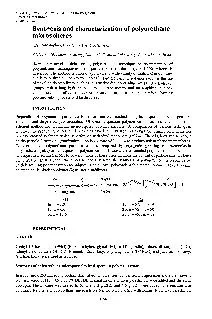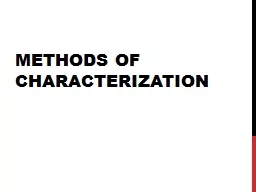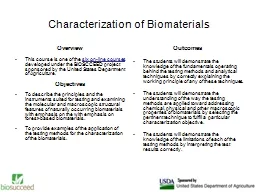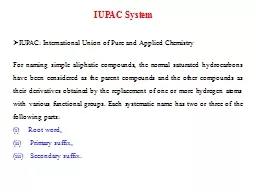PDF-1998 IUPAC and characterization Ramanathan, P. G. Shukla And
Author : marina-yarberry | Published Date : 2015-09-27
is dried under vacuum room temperature for 4 h to get free flowing polyurethane microspheres Yield 90 IR KBr 3400 cm NH 1750 cm COO 1710 cm NHCOO aromatic 4143br
Presentation Embed Code
Download Presentation
Download Presentation The PPT/PDF document "1998 IUPAC and characterization Ramanath..." is the property of its rightful owner. Permission is granted to download and print the materials on this website for personal, non-commercial use only, and to display it on your personal computer provided you do not modify the materials and that you retain all copyright notices contained in the materials. By downloading content from our website, you accept the terms of this agreement.
1998 IUPAC and characterization Ramanathan, P. G. Shukla And: Transcript
Download Rules Of Document
"1998 IUPAC and characterization Ramanathan, P. G. Shukla And"The content belongs to its owner. You may download and print it for personal use, without modification, and keep all copyright notices. By downloading, you agree to these terms.
Related Documents














